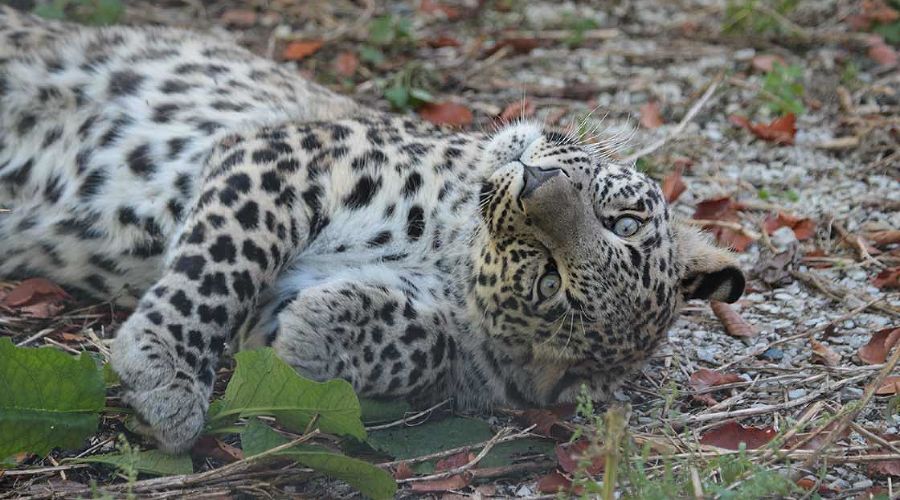
In North Ossetia, the Central Asian leopard Baksan (Batraz) has been found, the signals from the satellite collar having ceased transmission more than three months ago. On January 30, 2021, he was spotted near the road in the Koban Gorge and eyewitnesses managed to photograph him on a smartphone.
Immediately after receiving the message, the monitoring group of zoologists went to the indicated area and, using highly sensitive devices, established contact with the satellite collar of the leopard Baksan.
Baksan's collar stopped sending signals back on October 21, 2020, in connection with which there was a fear that the Red Book animal could have become a victim of poachers. Because of this hazard, a statement was sent to the internal affairs bodies of North Ossetia, but the police found no evidence of poaching.
“We hoped that Baksan was alive and that contact with him was lost due to a technical malfunction of the collar. After eyewitnesses promptly sent a video clip of a predator caught in the camera lens in a wooded area near the road to the Eco-squad "Bars", we examined a collar on the leopard's neck. We knew that another released leopard, a female Agura, was at that time in a different place, and Volna dropped her collar in Kabardino-Balkaria last year. The group of scientific support of the project immediately moved to the indicated area to check everything on the spot. There, with the help of highly sensitive devices, the zoologists established communication on special frequencies with Baksan’s collar that had failed. It is a great joy that he is alive and well, and we are very grateful to the eyewitnesses who did not lose composure and managed to capture the leopard on their smartphone and sent us highly useful video evidence. The return of Baksan to our field of vision brings back the hope of obtaining offspring from the leopards released into the wild in North Ossetia,” said the director of the A.N. Severtsov Institute of Ecology and Evolution RAS Academician of RAS Vyacheslav Rozhnov. The scientist added that today the Institute has information about the presence in Ossetia of three Central Asian leopards (Caucasian leopards) - two females and one male, released in North Ossetia in 2018 and 2020.
Experts continue to monitor the released female leopard Agura, whose collar regularly transmits data about her location and the places of successful hunting. At present, it is known that Agura has successfully formed her own territory and habitat and, after release, has covered a total of 867 km in Ossetia.
The program for the restoration of the Central Asian leopard in the Caucasus is being implemented by the Ministry of Natural Resources of Russia with the participation of the Sochi National Park, the Caucasian Nature Reserve, the North Ossetian Nature Reserve, the Alania National Park, the World Fund for Nature, the A.N. Severtsov Institute of the Russian Academy of Sciences (IEE RAS), A.K. Tembotov Institute of Ecology of Mountain Territories RAS, Moscow Zoo, with the assistance of the International Union for Conservation of Nature (IUCN) and the European Association of Zoos and Aquariums (EAZA). VTB Bank provides financial support for the monitoring of the Central Asian leopard in the Caucasus. In North Ossetia, RusHydro provides financial support for the population recovery program.
Information for inquiries:
Project coordinator of IEE RAS and RusHydro on the implementation of the recovery program of the Caucasian leopard (Central Asian leopard) in North Ossetia
Alibekov Artur Bilalovich
Tel .: +7 (968) 720-05-05
Hotline: 8 (800) 550 89 15
E-mail: alibekovab@gmail.com
Materials:
15-й регион: "В Северной Осетии нашелся переднеазиатский леопард Батраз"
Спутник Осетии: "В Северной Осетии на видео очевидцев попал считавшийся пропавшим барс"
ТАСС: "В Северной Осетии нашли леопарда, пропавшего более трех месяцев назад"
Минприроды России: "В Северной Осетии обнаружен пропавший в октябре леопард Баксан"
